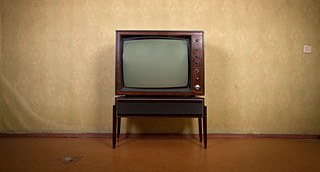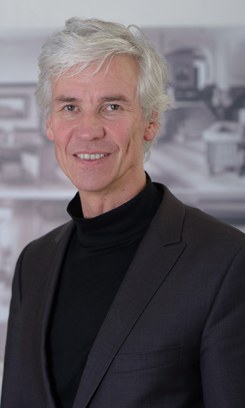80 Years of Television in Germany

In 1935 the world’s first regular television service was launched in Berlin with a live broadcast. Since then, this key medium has undergone all kinds of different phases – and not just in technological terms, says media scientist, Lorenz Engell.
Mr. Engell, what course did the development of television take before it finally came to the regular public transmissions that were broadcast in 1935?
The interesting thing about the early days of television is the fact that it took so long for people to start really using it. Back in the year 1884, the student Paul Nipkow had already applied for the first television patent, which was actually before the first cinema patent application had been filed. In his patent specification, he described an apparatus that he named the “electric telescope”. The Nipkow Disk, as it was called, was fully operational, but there was hardly any demand for it, which is why it did not really get off the ground until decades later. It was on the 22nd March 1935 that people then started going to so-called television parlors for a few hours a day to watch feature films and news programs.
The first really big television event then was the Olympic Games in Berlin in 1936.
The Nazis showed the races and competitions live on giant screens. Public television broadcasts at that time were, however, limited to Berlin. During the Second World War, televisions were set up in military hospitals for the wounded. There was, however, no serial production of television sets. The end of the Second World War heralded in the meteoric rise of the medium of television in America. After the war, the American electrical industry, which had produced so much for the war effort, now had production capacities that were in excess of demand. These were then duly invested in the serial production of television sets.
Television becomes a medium for the masses
Was Germany also open to this development?
Most Germans, however, still could not afford a television set. That was why most people watched television in bars and cafés. There was a lot of advertising, telling people that television and family go hand in hand; higher purchase was publicised by industry so that everybody could buy a television “on the never-never”. In this way, Germany’s economic miracle was given a boost. Televisions took over living rooms everywhere and became the ultimate status symbol.
Television is always what’s on the other channel
A further important milestone in the history of German television was the launching of Germany’s second public channel, ZDF. What did this do for the choice of programs?Up to that point, there had only been one channel of the ARD. In its day ZDF was the most innovative and modern channel in Europe, with all kinds of new formats. Das aktuelle Sportstudio (a sports program) was a huge hit because it was the first time the studio itself was shown in all its technological glory with rows of chairs, lights, and cameras. ZDF also paved the way for the first series that did not depict family situations – Percy Stuart, for example, was a series about a pop-art agent along American lines. The quiz show, Wünsch dir was (Make A Wish), experimented with the first forms of viewer participation.
How did the advent of the private TV stations in 1985 change the public broadcasting scene in Germany?
The admission of the private TV stations onto the broadcasting scene coincided with the first moves towards digitalization. This led to changes in image-processing methods, television developed a new style. The number of channels soared, television was totally transformed, in sociological terms, too. It was also the time when the first music channels came into being. International channels like MTV and Viva changed the aesthetics of television sustainably. All the German channels also developed their own particular, visual design, in order to be instantly recognizable and to promote brand loyalty.
Television will no longer be the key medium
How does the medium of television interact with society, or what influence does television have on major events?The fall of the Berlin Wall in 1989, for example, might actually never have happened had it not been for television. Television was live on the spot at the main events leading up to the fall of the Wall and reunification – for example, when the German Foreign Minister at the time, Hans-Dietrich Genscher, announced from the balcony of the German embassy in September 1989 in Prague that the GDR citizens, who had taken refuge there and were waiting for exit visas, could now leave for the West. The people in the GDR also found out about what was happening in their country via West-German television. Television made a major contribution to reinforcing and supporting the opposition to the regime of the SED – the Socialist party of the GDR.
Since the turn of the millennium, television has been consumed more and more via the Internet. Does conventional, linear television still have a future?
In our neo-liberal, achievement-oriented society that puts us under constant pressure to be active, watching the “goggle-box” has become a ritual that takes the pressure off. Nevertheless in future television will no longer be the leading medium it used to be. What is more, television has always been in a state of flux. The television of the 1950s was really quite different from the television of 1985. In future, there will be a recognizable form of traditional television and a new, transformed hybrid form developing on the Internet.
Compared to other countries, are there any notable differences when it comes to the way Germans use and watch television?
In the case of the German-French channel, ARTE for exemple, mass-media cultures have run up against some very different understandings of what television should be and this has led to the development of its very own mixed form of television. ARTE is more representative of the aestheticisation of television than MTV, for example. The new graphic design came to Germany via France. Before ARTE there was also not so much focus on high culture in Germany. In other respects, Germany is naturally oriented to the USA, by far the largest television market in the world. The USA, for example, is famous for producing TV series at the highest possible level, productions that even surpass cinema films when it comes to their design. Germany is now following suit in this domain.
Lorenz Engell is a media scientist and a professor for media philosophy at the media faculty of the Bauhaus University in Weimar. He is furthermore Director of the Internationales Kolleg für Kulturtechnikforschung und Medienphilosophie/IKKM (International Institute for Research of Cultural Techniques and Media Philosophy) in Weimar.